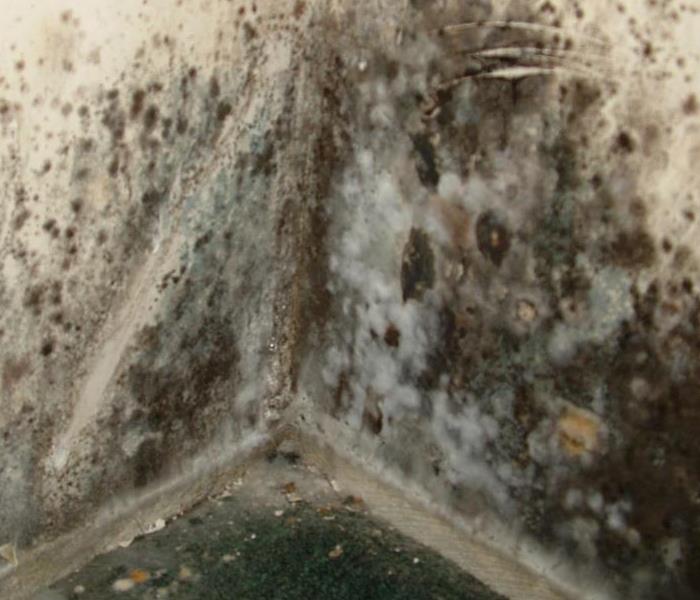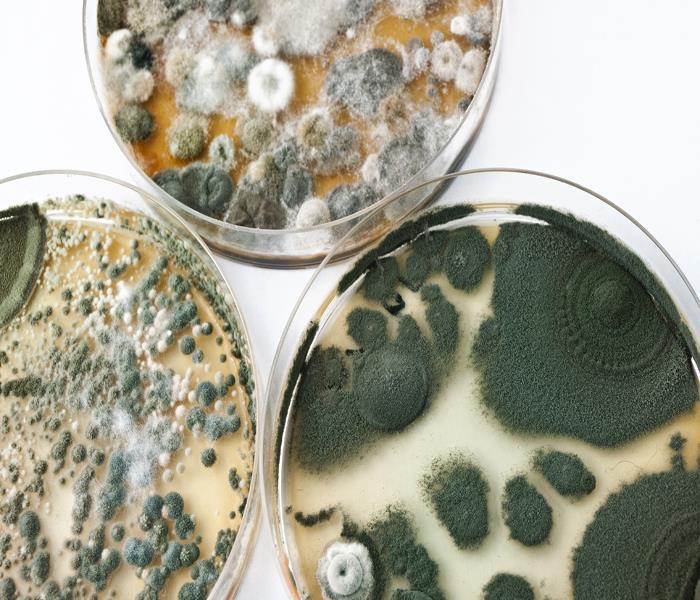Recent Mold Remediation Posts
How To Handle Mold Growth on Food
9/23/2019 (Permalink)
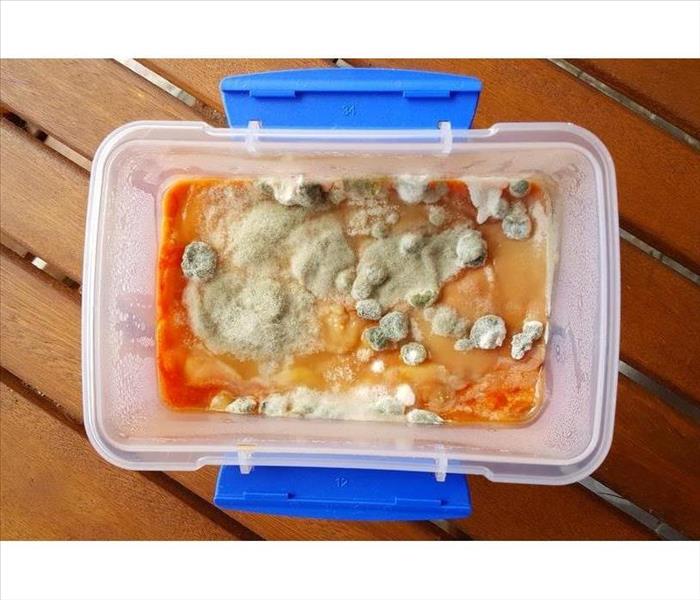 Mold growth on food
Mold growth on food
Witnessing mold growth on your food can be an uncomfortable experience. It’s often a sign of an underlying problem in your home. If you notice the dreaded black, blue or green fuzz growing on your bread, vegetables or fruits, simply throwing the food away is not enough. These tips are great for homeowners who want to responsibly inhibit mold damage to their property.
Causes of a Mold Outbreak
Common causes of mold in Woodbury, TN include:
- High humidity
- Water damage to your walls
- Impure air
Mold can thrive on food because it needs nutrients to grow. It often pops up on bread stored in the back of a cupboard or breadbox because the area is moist and dark. Many people don’t know that mold growth on food might mean that there are millions of invisible spores in the air that can spread rapidly, sometimes in a few hours.
Mold Remediation Techniques
Fortunately, anyone can complete steps to prevent their food from spoiling. Keeping bread and other food items in the fridge is a great start. The colder temperatures stop mold in its tracks so you can inspect your home for the root cause.
Check for water leaks that can damage the interior of your property. Water leaks are often undetected, but sometimes there are signs such as water marks or slow drips underneath your sink. Calling residential mold experts for a yearly checkup can save you the hassle of figuring it out on your own.
Safely dispose contaminated food by putting it in a plastic bag and taking the trash out of your home as soon as possible. Clean the infested area with soap and water to kill the harmful bacteria.
Mold growth on your food should be handled with care instead of panic. Remove the spoiled items and remember to take these precautions to complete a responsible mold cleanup.
3 Ways to Find a Mold Growth in Your Building
7/25/2019 (Permalink)
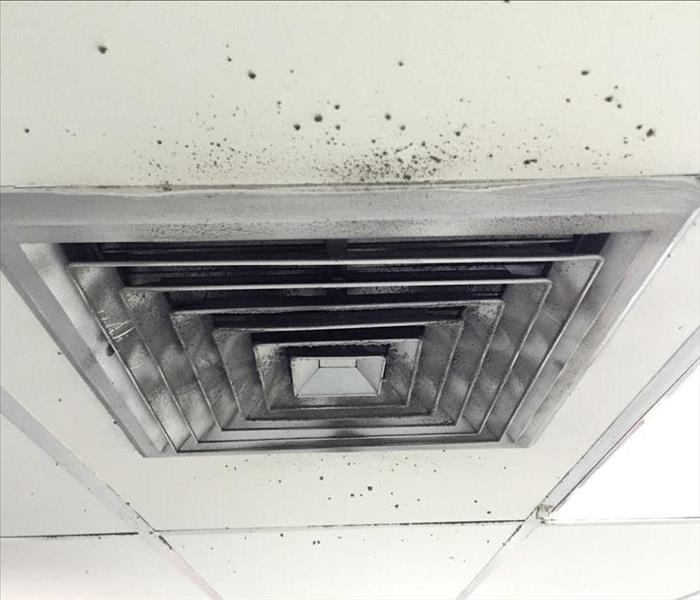 Check your air ducts
Check your air ducts
Ways To Confirm You Have Mold In Your Building
Mold is a common problem in many buildings. It grows easily in moist environments and can spread quickly, so you can sometimes develop a problem overnight. In some cases, you may need to hire an indoor environmental specialist. If you believe that you have mold in your Silver Point, TN, building, here are a few ways to confirm your suspicions.
1. Look for Visible Signs
Perhaps the easiest way to spot a mold is simply to look for one. This fungus comes in many colors and usually has a fuzzy appearance. The first places that you should check are those with excessive moisture, such as air ducts, plumbing fixtures and any leaky or water damaged areas. While some mold will be easy to find, some may be hidden, so you should not rely solely on this method.
2. Check for Unpleasant Odors
In cases of hidden mold, there is another technique that you can use to determine its presence. This fungus often gives off a musty odor, so you might be able to smell it before you can see it. If you notice a mildewy scent in the building but are unable to locate the source, chances are you have hidden mold that will likely require you to hire an indoor environmental specialist.
3. Hire a Professional
If you believe that you have mold growing in your building but haven’t been able to find it on your own, then it’s time to hire a professional. A trained specialist can perform a mold test to determine if there is excessive growth. Once they have done so, they can inform you of the best way to move forward.
Sometimes the presence of mold is obvious, but if you are uncertain, it is best to hire an indoor environmental specialist to perform the test for you. Attempting to do so on your own will likely result in inaccurate findings. If there is a growth, a mold remediation company can remove it and help keep it from returning.
Identifying the Type of Mold Growing In Your Home
5/24/2019 (Permalink)
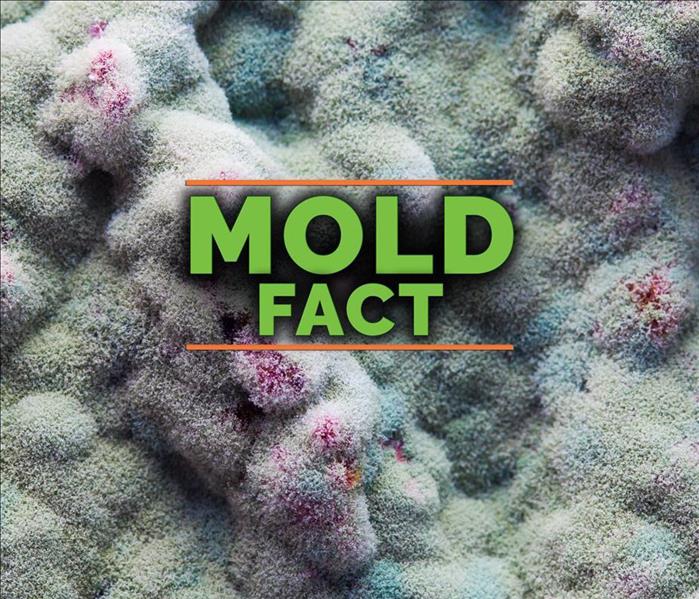 Aspergillus is a type of mold you can find in your Smithville, TN home
Aspergillus is a type of mold you can find in your Smithville, TN home
Not all molds are created equal. In fact, like any species, there are a variety of types of mold growth that may invade your dwelling. Some of the more common types of house mold you may discover in your Smithville, TN, home include the following:
- Stachysbotrys chartarum, otherwise known as "black mold"
- Alternaria
- Aspergillus
- Chaetomium
- Penicillium
Though all molds thrive in high humidity, many house molds prefer certain types of materials. For instance, penicillium prefers insulation and furnishings while Chaetomium prefers drywall with water damage. Black mold prefers dark, wet environments such as air conditioning pipes and ducts.
Treating Common House Molds
Regardless of the type of mold growth you discover in your home, it is essential that you contact a mold remediation professional to assess the extent of the issue and to provide a customized treatment plan. Despite needing very little to grow and thrive, remediating mold is a complex and dangerous undertaking that requires extensive knowledge of the fungus and specialized equipment.
If you fail to rid your house of its mold problem the first time around, you risk giving the fungus room to spread. Your home has already likely suffered considerable damage after the first infestation, so there's no telling how much damage a recurrent issue can cause. A professional knows all of the various types of molds' hiding places and can thoroughly inspect and test your home to ensure he or she gets rid of it before embarking on the restoration process.
Common Misconceptions About Mold
Controlling mold and preventing recurrent infestations begins with understanding mold. Unfortunately, there is a lot of misinformation out there regarding the fungus. It's time to lay those misconceptions to rest.
For one, mold is not only found in homes in which there is water damage. Mold can grow on any surface on which there is any amount of moisture.
Two, black mold is not the only harmful type of mold. Any type of mold can wreak havoc on your home and its belongings.
Three, mold cannot be treated with DIY methods—at least, most mold can't. Unless the mold growth is on a nonporous surface, it's best to contract a mold cleanup crew for swift and effective remediation.
Steps To Prevent Mold Growth in Commercial Properties
4/9/2019 (Permalink)
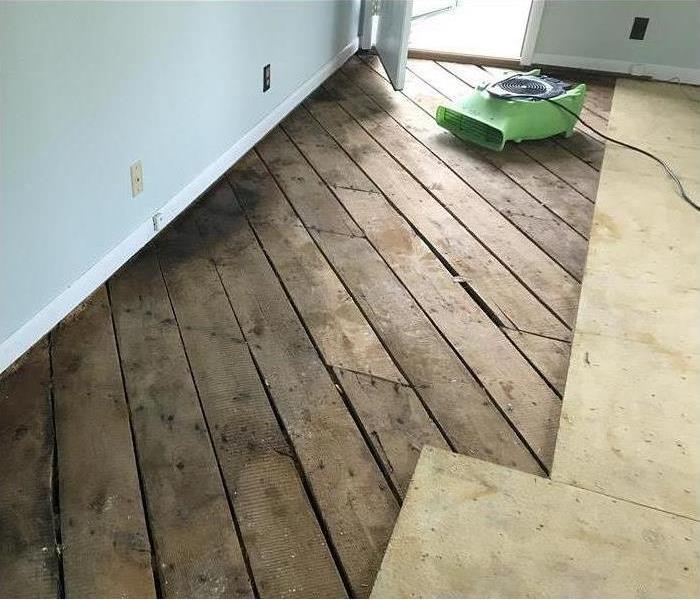 Level of humidity and moisture can damage a building and increase mold growing
Level of humidity and moisture can damage a building and increase mold growing
Mold can have a disastrous effect on a business in Woodbury, TN, which is why mold prevention is often important. There are several ways business owners and managers can make it difficult for mold to grow and spread in their properties.
1. Prevent Damage From Water
Most types of mold need water to grow, and protecting your business from leaks and floods by quickly fixing any small issues can prevent mold growth long-term. In addition to flooding and leaks, high levels of humidity and moisture can also damage a building and increase the likelihood of mold growing in the business. If certain areas in your building, such as bathrooms or attics, are prone to high levels of humidity, it can be helpful to use dehumidifiers and increase the airflow.
2. Mitigate the Effects of Leaks or Floods
Unfortunately, water damage cannot always be avoided. Broken appliances, pipe leaks and pipe breaks are all common causes of destruction from water, and if a leak or flood occurs without warning, it’s wise to act quickly. Removing any water as quickly and as safely as possible is an important step in mold prevention. After water is removed, it can also be helpful to contact water and mold damage experts who can help to keep the area dry and mitigate the effects of the existing damage.
3. Be Aware of Common Sites of Growth
In addition to preventing water damage and mitigating the effects of any leaks or floods, it’s useful for business owners and managers to know locations where mold commonly grows. Often, mold growth is found under sinks, in kitchens and bathrooms and close to appliances that use water. Routinely inspecting areas in your business where mold may grow can help you become aware if a problem is present.
Mold prevention can save business owners time and money if it is done well. For business owners, it is wise to prevent water from accumulating in one area, quickly react to leaks or flooding and know where mold is likely to grow.
What Is Mold? Your Guide To Understanding This Fungus Among Us
9/11/2018 (Permalink)
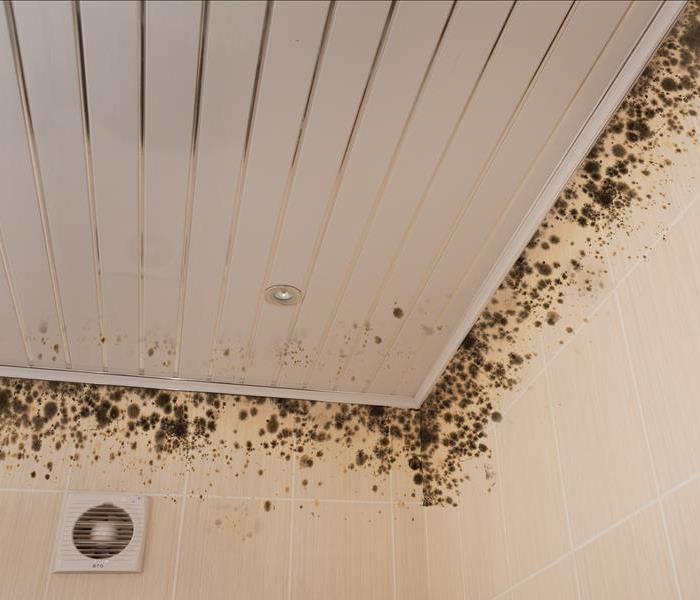 Mold damage in Cookeville, TN
Mold damage in Cookeville, TN
Mold is one of those dreaded problems that most homeowners are forced to deal with at least once or twice in their lifetimes. However, just because it is a common problem does not make it any easier to remediate—or understand. If you want to better understand black mold, its causes and how you can prevent it, contact your Cookeville, TN, mold remediation team to discuss your concerns and find answers to your most pressing questions.
What Are the Types?
If you want to know how to prevent mold and, when it's present, how to get rid of it, you need to first understand the different varieties and which may be present in your home. There are four main types:
- Cladosporium
- Penicillium
- Alternaria
- Aspergillus
Your mold cleanup team can help you identify the type present in your home and advise you on the best way to deal with it. If it is black mold, the team can act swiftly to prevent further contamination and prevent unwanted side effects.
Where Is It Found?
Mold can grow in just about any environment and all year round. However, its growth is typically encouraged by high humidity levels and warm conditions. Outdoors, you may be able to find it in moist, shady areas where leaves or other vegetation are decomposing. Indoors, you may be able to find it where humidity levels are high.
How Can You Prevent Exposure?
Preventing mold exposure does not have to be hard, and in fact, many proven prevention measures are things you likely do already. For instance, if you notice a moisture problem, you fix it. If your roof has a leak, you patch it. If the air in your home feels wet, you invest in a dehumidifier. In short, the key to preventing mold is moisture control.
It can be disheartening to find black mold or mold of any kind in one's home. If you discover the fungi in your home, reach out to Cookeville, TN , mold remediation experts to correct the issue and prevent further problems.
What If My House Is Only a Little Moldy?
5/14/2018 (Permalink)
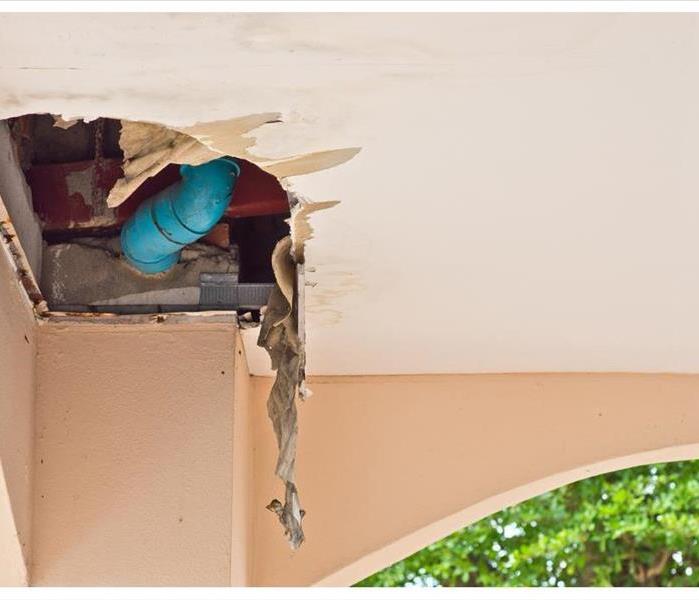 Make sure to reach out for help if you suspect you may have a mold infestation larger than what you can see with the naked eye.
Make sure to reach out for help if you suspect you may have a mold infestation larger than what you can see with the naked eye.
If you’re only seeing the beginnings of a mold outbreak, it may be possible to contain and remediate your house mold on your own. If you’ve only got small mold deposits in your Cookeville, TN, home, here are a few pointers on how to carefully remove mold growth from your house.
Cleaning Small Amounts of Mold
To clean a small amount of mold from your home, you should:
• Always wear protective equipment. Cover your eyes, mouth, and nose. Make sure to wear gloves and clothing that can either be washed or thrown away when you’re done.
• Find and remediate the source of moisture. Before getting rid of the mold, get rid of the source or the mold will only come back. You’ll usually find some kind of water damage fueling house mold, such as leaking pipes or condensation.
• Wipe the affected area with detergent and water. A mild mix of detergent and water should serve to wipe away the mold without damaging the surface underneath it. If your house mold won’t wipe off with this mixture, you may be dealing with deeper infestation requiring professional support.
• Only use bleach sparingly. Bleach can sometimes kill mold, but it will also damage the surfaces underneath it.
• Soak affected items with baking soda and vinegar. Baking soda and vinegar are age-old solutions for killing mold. These can work on patches on the walls or floors, or on personal items that need to be cleaned. Soak these items in a solution of baking soda and vinegar; scrub the mold spots with the same solution before washing.
What You See May Not Be What You Get
Even if you only see small amounts of mold in your home, you may actually have a deeper infestation hidden behind wallpaper, drywall, floorboards, or linoleum tile. Make sure to reach out for help if you suspect you may have a mold infestation larger than what you can see with the naked eye. For more information, visit http://www.SERVPROcookevillecarthagesmithvillewoodbury.com/.
What If My House Is Only a Little Moldy?
5/8/2018 (Permalink)
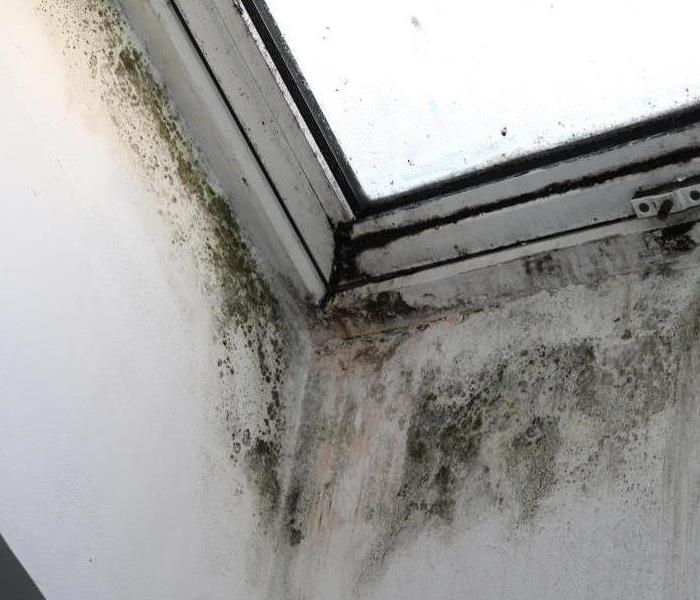 Make sure to reach out for help if you suspect you may have a mold infestation larger than what you can see with the naked eye.
Make sure to reach out for help if you suspect you may have a mold infestation larger than what you can see with the naked eye.
If you’re only seeing the beginnings of a mold outbreak, it may be possible to contain and remediate your house mold on your own. If you’ve only got small mold deposits in your Cookeville, TN, home, here are a few pointers on how to carefully remove mold growth from your house.
Cleaning Small Amounts of Mold
To clean a small amount of mold from your home, you should:
• Always wear protective equipment. Cover your eyes, mouth, and nose. Make sure to wear gloves and clothing that can either be washed or thrown away when you’re done.
• Find and remediate the source of moisture. Before getting rid of the mold, get rid of the source or the mold will only come back. You’ll usually find some kind of water damage fueling house mold, such as leaking pipes or condensation.
• Wipe the affected area with detergent and water. A mild mix of detergent and water should serve to wipe away the mold without damaging the surface underneath it. If your house mold won’t wipe off with this mixture, you may be dealing with deeper infestation requiring professional support.
• Only use bleach sparingly. Bleach can sometimes kill mold, but it will also damage the surfaces underneath it.
• Soak affected items with baking soda and vinegar. Baking soda and vinegar are age-old solutions for killing mold. These can work on patches on the walls or floors, or on personal items that need to be cleaned. Soak these items in a solution of baking soda and vinegar; scrub the mold spots with the same solution before washing.
What You See May Not Be What You Get
Even if you only see small amounts of mold in your home, you may actually have a deeper infestation hidden behind wallpaper, drywall, floorboards, or linoleum tile. Make sure to reach out for help if you suspect you may have a mold infestation larger than what you can see with the naked eye. For more information, visit http://www.SERVPROcookevillecarthagesmithvillewoodbury.com/.
What is Black Mold?
3/29/2016 (Permalink)
You may have seen sensational news reports that warn about the dangers of “black mold” or “toxic mold”. These reports can be alarming and confusing so it’s beneficial to get the facts to better understand mold.
Stachybotrys chartarum is the type of mold often called black mold, and it does produce allergens and irritants. However, many types of mold can produce allergens and irritants. Treat any mold with caution – stay out of affected areas and don’t touch or disturb the mold.
How Do I Tell If It’s Black Mold?
Since many types of mold can cause reactions, you should contact us regardless of the color or type of mold. In many instances, multiple types of mold may exist in the same house or structure. If you suspect you have a mold problem, contact SERVPRO of Cookeville/Carthage/Smithville/Woodbury immediately.
Understanding Mold
When water intrudes into your property, mold growth can start in as little as 48 hours. Consider the following mold facts:
- Mold is present almost everywhere, indoors and outdoors.
- Mold spores are microscopic, float along in the air, and may enter your home through windows, doors, or AC/heating systems or even hitch a ride indoors on your clothing or a pet.
- Mold spores thrive on moisture. Mold spores can quickly grow into colonies when exposed to water. These colonies may produce allergens and irritants.
- Before mold remediation can begin, any sources of water or moisture must be addressed. Otherwise the mold may return.
- Mold often produces a strong, musty odor, and that odor can lead you to possible mold problem areas.
- Even higher-than-normal indoor humidity can support mold growth. Keep indoor humidity below 45 percent.
SERVPRO of Cookeville/Carthage/Smithville/Woodbury is locally owned and operated—so we live and work here too and are proud to be part of this community. We are also part of a national network of over 1,600 Franchises with special Disaster Recovery Teams placed strategically throughout the country to respond to large scale disasters.
Mold Causes
11/24/2015 (Permalink)
Molds are part of the natural environment, and can be found everywhere, indoors and outside. It usually isn't a problem until it starts to grow inside. The best way to control mold growth is to control moisture. There are 4 critical requirements for mold to grow.
- Mold Spores - When mold reproduces, it creates mold spores. Mold spores can survive in much harsher conditions than mold and spread through the air current. They are literally everywhere. Using an air purifier in your home that has a HEPA filter will help with eliminating the spores in the air.
- Food - In buildings, molds are most commonly found on cellulosic building materials, meaning anything with paper, wood or natural fiber textiles. Molds eat the sugar and starch from the cellulose. But mold can also grow on non-cellulosic material, such as plastic, provided that there is some sort of food source on it. Even the oil from your skin on stainless steel, or a soap residue after cleaning will provide sufficient nutrients for mold to grow. It's virtually impossible to eliminate mold food sources from your home.
- Temperature - Most molds grow at 40-100 degrees Fahrenheit. Unfortunately, we're quite comfortable between those temperatures also.
- Moisture - Finally, something you can control. Molds require high m oisture levels. Mold spores that have been dormant for years can can begin growing if adequate moisture or humidity is present. After mold has started to grow, it can survive at lower humidity levels. Mold only needs 24-48 hours of moisture to grow. Therefore if if a suitable material in your house has been wet longer than a day, there's a chance mold is already present.
When your home is being threatened by mold from any type of water damage or just summer humidity, SERVPRO of Cookeville has the expertise to prevent or mitigate the devastating effects mold can have in order to help preserve and restore your property. We have the equipment and experience necessary to handle the most challenging mold removal situations and are available around-the-clock. We concentrate on safely drying, deodorizing and disinfecting the areas flooded or damaged by water. When fire and water take control of your life, we help you take it back.





 24/7 Emergency Service
24/7 Emergency Service







